ChatGPT has revolutionized digital communication with its advanced artificial intelligence capabilities. Since its launch in November 2022, this powerful chatbot has gained over 100 million users, making it one of the fastest-growing tools in tech history.
Developed by OpenAI with backing from Microsoft’s $10 billion investment, ChatGPT processes natural language to generate human-like responses. It supports 95+ languages, helping users with tasks ranging from coding to customer service automation.
Unlike traditional search engines, this AI tool creates original content instead of just retrieving links. Professionals and students rely on it for drafting emails, summarizing documents, and brainstorming ideas—all for free with 500 million monthly active users.
Key Takeaways
- ChatGPT is an AI-driven chatbot transforming digital interactions.
- It generates text in over 95 languages using natural language processing.
- OpenAI developed it with major support from Microsoft.
- Free access makes it a go-to productivity tool worldwide.
- Unlike search engines, it creates original content on demand.
What Is ChatGPT? Understanding the AI Tool
Breaking barriers in communication, advanced language models redefine human-AI interaction. At its core lies the Generative Pre-trained Transformer (GPT), a neural network trained on 570GB of diverse text data.

Behind the Scenes: How It Works
GPT’s architecture uses self-attention mechanisms to process natural language contextually. Each response stems from analyzing 300B+ parameters, refined via reinforcement learning with human feedback (RLHF). Users shape improvements through daily thumbs-up/down ratings.
Originally OpenAI launched GPT-3.5 in November 2022. The upgraded GPT-4o now handles complex queries with live web access, though its base knowledge cuts off at January 2023.
The Minds Behind the Innovation
Founded by Sam Altman and Elon Musk, OpenAI secured $1B to ensure AI benefits humanity.
“Our mission is to build safe AGI that aligns with human values,”
states their manifesto. Microsoft’s Azure infrastructure since 2019 powers its scalability.
Ethical safeguards prevent harmful content generation, reflecting ongoing research into responsible AI. This large language model isn’t just code—it’s a collaborative evolution.
What Is ChatGPT Used For? Key Applications
From drafting blog posts to debugging software, this AI tool reshapes workflows. Its versatility spans industries, offering tailored solutions for content creation, technical tasks, and beyond. Here’s how professionals leverage its capabilities.

Content Creation and Writing Assistance
Need a 1,500-word article in 45 seconds? This tool delivers. It crafts SEO-optimized drafts, generates product descriptions, and even scripts social media posts. Sales teams use it to automate email campaigns, while marketers schedule platform-specific content effortlessly.
- Blog outlines with integrated keywords for higher search rankings.
- Personalized email templates that save hours of manual work.
Coding and Debugging Programs
Developers rely on it to explain complex algorithms or fix errors in real time. Supporting 20+ languages like Python and JavaScript, it acts as a 24/7 coding tutor. One user reduced debugging time by 40% with its step-by-step explanations.
Education and Personalized Tutoring
Khan Academy’s pilot program showed a 30% improvement in student engagement. Teachers generate custom lesson plans, while language learners practice conversational skills. It adapts to individual pacing, making education accessible and interactive.
Automating Customer Support
Shopify slashed support tickets by 60% using AI-powered bots. These systems categorize inquiries, prioritize urgent requests, and respond in multiple languages. Businesses save resources while maintaining 24/7 service.
“Our AI handles 80% of routine queries, freeing staff for complex issues,”
reports a Shopify CX manager.
How Businesses Leverage ChatGPT
Companies worldwide now harness AI to streamline operations and boost engagement. From crafting ads to optimizing search engine rankings, intelligent tools redefine efficiency. Teams save hours while delivering personalized experiences at scale.

Marketing and Social Media Management
Hootsuite’s AI-powered calendar automates content scheduling, while SEMrush integration ensures keyword-optimized posts. Brands generate 40% more ad variations for A/B testing, targeting ideal audiences. Viral hashtag suggestions and competitor analysis further refine strategies.
Reputation management thrives with AI-written review responses. Predictive analytics identify trending topics, letting teams create timely content. Multilingual support simplifies global campaigns, aligning with local buyer personas.
Product Descriptions and SEO Optimization
E-commerce sites create listings 40% faster with AI-generated descriptions. Schema markup and image alt-text optimization enhance visibility. Localized content improves regional search engine performance, driving traffic.
“Automated SEO adjustments cut our workload by half while doubling organic reach,” notes an Amazon seller.
From schema generation to product tagging, businesses achieve precision without manual effort. The result? Higher conversions and seamless scalability.
ChatGPT for Personal Productivity
Boost your daily efficiency with AI-powered personal assistance. Whether managing chores or mastering new skills, intelligent tools adapt to your needs. A Zapier study shows a 78% productivity boost when automating repetitive tasks.

Daily Task Automation
From grocery lists to meeting agendas, AI simplifies routines. Generate meal plans, create workout schedules, or draft podcast scripts—all in seconds. Busy professionals save valuable times by automating up to 40% of manual work.
- Smart planning: Travel itineraries with budget constraints.
- Career growth: Resume optimization using ATS-friendly keywords.
- Habit tracking: Personalized journal prompts for consistency.
Learning New Skills
Students and professionals leverage AI for accelerated growth. Duolingo’s AI coach feature demonstrates how interactive lessons enhance retention. Explore creative ways to learn music theory, summarize books, or practice negotiation scenarios.
“Role-play simulations build confidence faster than traditional methods,”
notes a language instructor. With tailored feedback, mastering complex subjects becomes intuitive.
Advanced Features of ChatGPT Plus
Unlock premium AI features with ChatGPT Plus for enhanced productivity. For $20/month, subscribers access exclusive tools like DALL-E 3 image generation and a 50K token context window—ideal for complex tasks.
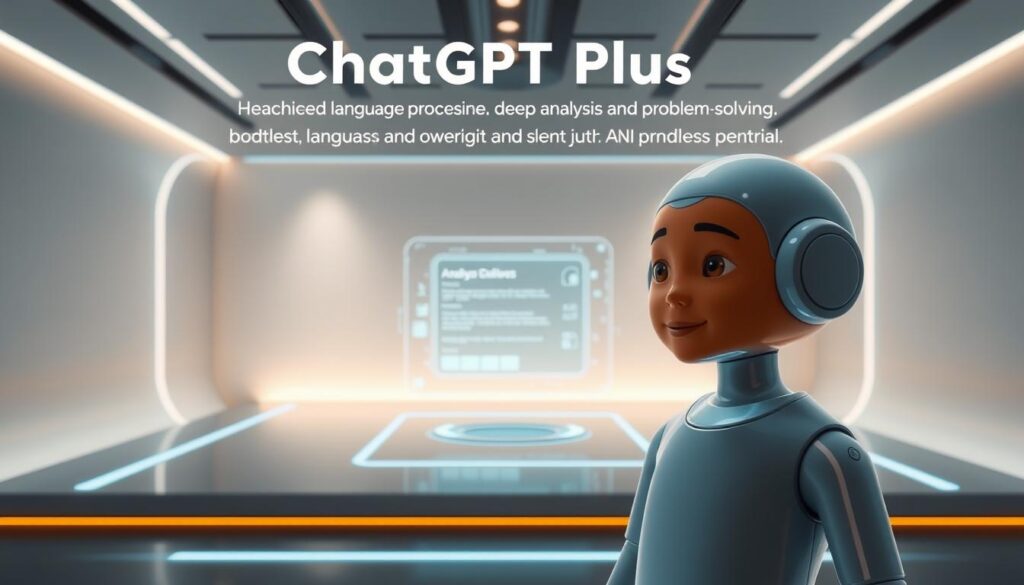
GPT-4o Capabilities
The latest version of ChatGPT delivers 25,000-word responses—six times longer than the free tier. Analyze PDFs or CSV files with visualizations, or create custom GPT models for specialized workflows. Real-time web browsing with cited sources ensures accuracy.
Solve math problems with step-by-step breakdowns or get live stock market insights. Voice conversations on iOS/Android make interactions seamless. With GPT-4o, multi-document comparisons become effortless.
Priority Access and Extended Functionality
Skip queues during peak times and gain early access to beta features. As one user notes:
“Priority support alone justifies the subscription—no more waiting for busy servers.”
The Advanced Data Analysis tool transforms spreadsheets instantly. Generate 50 images daily with DALL-E 3, perfect for marketers and designers. Whether for work or learning, ChatGPT Plus elevates every task.
Integrating ChatGPT with Other Tools
Seamless integration with popular platforms amplifies ChatGPT’s utility across industries. Developers and businesses connect AI capabilities to existing workflows through APIs and plugins. This flexibility transforms how teams collaborate and automate tasks.
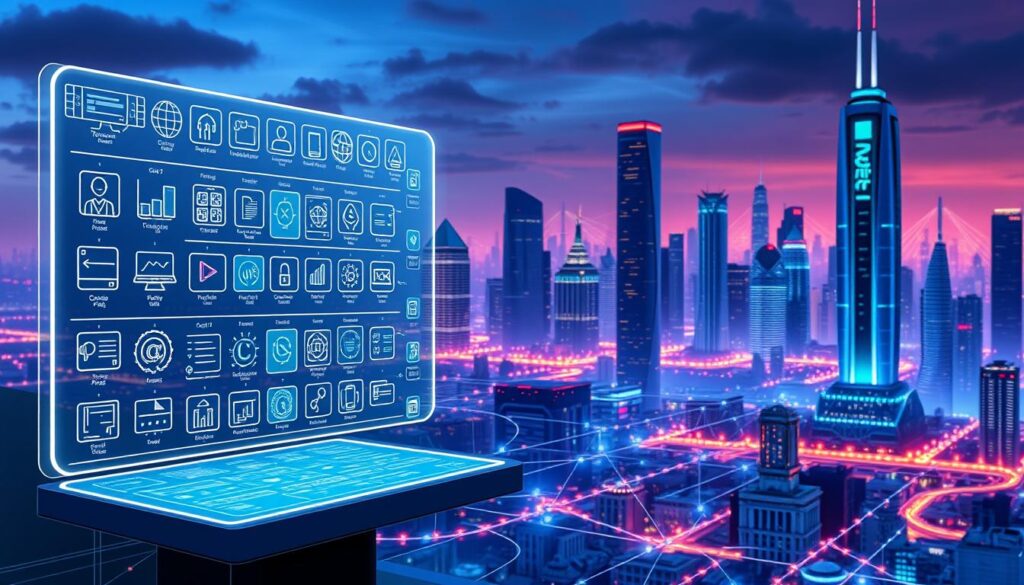
APIs and Developer Use Cases
OpenAI’s REST API enables custom solutions for diverse needs. Zapier links ChatGPT to 5,000+ apps, automating tasks like email drafting or data entry. Shopify’s AI recommendation engine boosts sales by 15% with personalized product suggestions.
Key integrations include:
- Slack bots for instant team communication summaries.
- WordPress auto-posting for streamlined content management.
- Salesforce CRM updates using natural language queries.
Third-Party Plugins and GPTs
Specialized plugins extend functionality for niche demands. Google Sheets generates formulas instantly, while Figma auto-documents design specs. Custom GPTs tackle industry-specific challenges:
| Tool | Use Case | Impact |
|---|---|---|
| Medical Diagnostics GPT | Symptom analysis & research summaries | Reduces diagnosis time by 30% |
| Real Estate Generator | Automated listing descriptions | Boosts agent productivity by 50% |
| Legal Document Analyzer | Contract review & clause extraction | Cuts review hours by 70% |
“Our custom GPT organizes academic papers in minutes—a task that took days manually.”
Ethical Considerations When Using ChatGPT
Responsible AI usage requires addressing critical ethical dilemmas. While tools like this boost productivity, they also introduce risks like biased outputs and privacy gaps. Proactive measures ensure technology aligns with societal values.
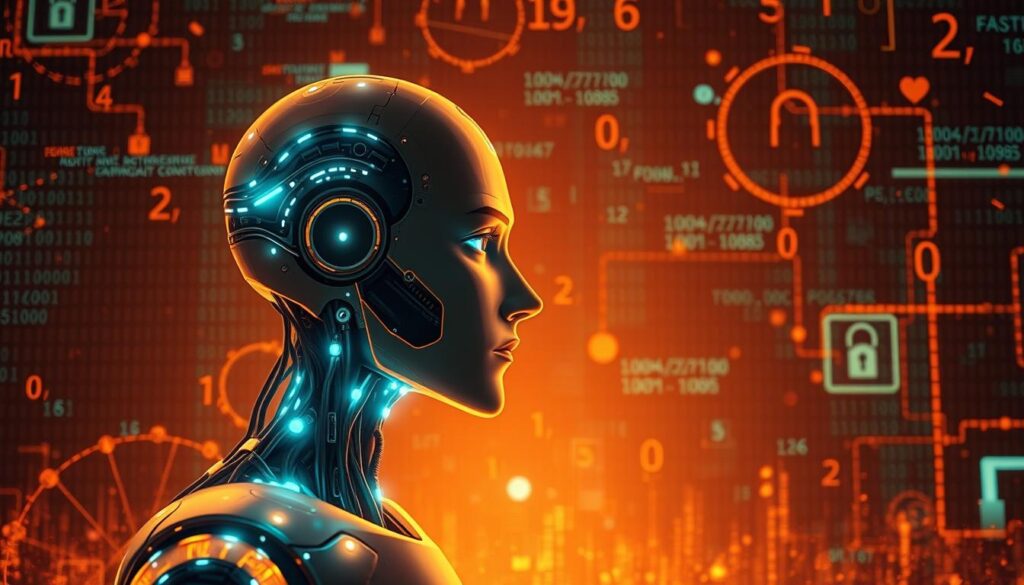
Bias and Misinformation Risks
Training data diversity audits reduce skewed responses. For example, CNET faced backlash for AI-generated articles with factual errors. Combating misinformation demands:
- Watermarking AI content to distinguish it from human work.
- Deepfake detection to curb manipulated media.
- Content moderation workflows for accuracy checks.
Privacy and Data Security
Italy’s 2023 GDPR ban highlighted data protection gaps. Enterprises mitigate risks with:
- Encryption protocols for user interactions.
- Explicit consent for training data usage.
- Compliance with EU AI Act transparency rules.
“Unchecked AI deployment risks eroding trust—ethics must guide innovation.”
Balancing innovation with accountability ensures sustainable AI adoption. Recognizing limitations fosters trust in evolving technologies.
Limitations of ChatGPT
Every technology has its constraints, and advanced language models are no exception. While these tools demonstrate remarkable intelligence, users should understand their boundaries to maximize effectiveness.

Accuracy and Hallucinations
AI-generated responses sometimes contain factual errors or “hallucinations.” Technical topics show a 15-20% inaccuracy rate. For example, GPT-4 scored in the 90th percentile on the 2023 Bar exam, while GPT-3.5 ranked only in the 10th.
Common accuracy issues include:
- Mathematical errors in complex calculations
- Cultural misunderstandings in translated content
- Failure to detect sarcasm or subtle humor
Data Currency Challenges
Without web search enabled, responses rely on pre-2023 information. This creates gaps for time-sensitive queries like stock prices or news events. The system also struggles with:
- Memory constraints in long conversations
- Medical diagnosis restrictions due to liability
- Legal disclaimers for professional advice
| Limitation | GPT-3.5 Impact | GPT-4 Improvement |
|---|---|---|
| Factual Accuracy | High error rate | 40% reduction |
| Context Memory | 3,000 words | 25,000 words |
| Real-Time Data | Not available | With browsing |
“AI tools excel at pattern recognition but lack human judgment—always verify critical outputs.”
Creative tasks also reveal boundaries. While the system generates original content, truly innovative ideas still require human insight. Emotional intelligence gaps further limit personal interactions.
ChatGPT Alternatives Compared
Exploring beyond the familiar, several AI chatbots offer unique advantages over standard solutions. From multimodal capabilities to specialized industry tools, the market delivers diverse options for every need. Businesses and developers now evaluate platforms based on cost, customization, and real-time data access.
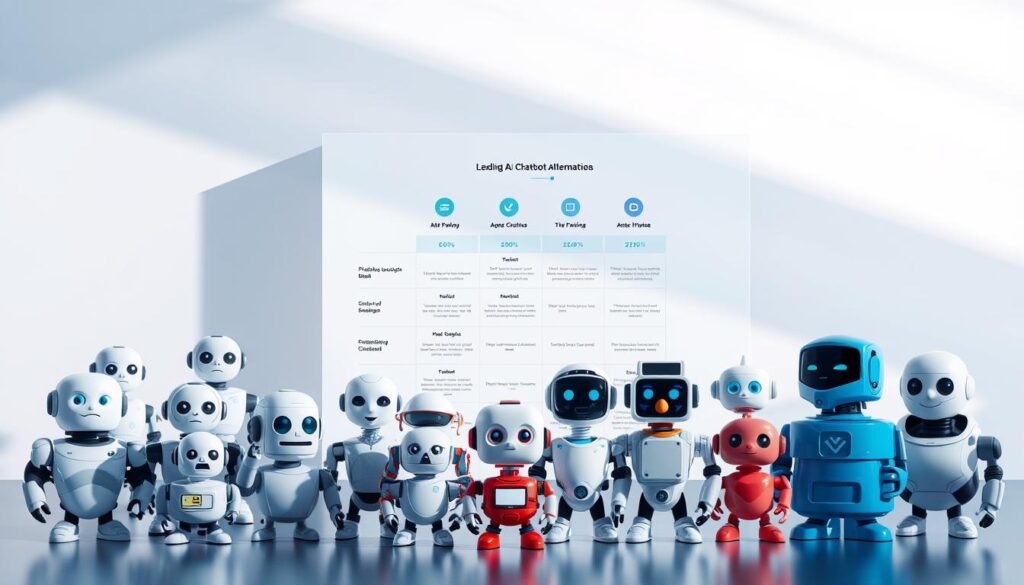
Commercial Powerhouses: Gemini and Copilot
Google’s Gemini stands out with 2024 multimodal features, processing text, images, and audio simultaneously. Microsoft’s Copilot integrates deeply with Office 365, offering:
- Live document collaboration during video calls
- Excel formula generation from natural language
- Enterprise-grade security for sensitive data
Both platforms leverage their parent company ecosystems, with Gemini excelling in internet search integration and Copilot dominating productivity workflows.
Open-Source Challengers
Meta’s LLaMA 2 changed the game by allowing commercial use—a first for major open models. Developers appreciate:
- Full model customization for niche applications
- Local deployment options for enhanced privacy
- Active community support with 50K+ GitHub contributors
Annotated benchmarks show LLaMA 2 achieves 92% of GPT-4’s performance for specific technical tasks, making it cost-effective for research teams.
| Platform | Token Context | API Cost/1K tokens | Specialization |
|---|---|---|---|
| Claude 2 | 100K | $0.12 | Legal/medical analysis |
| Perplexity AI | 8K | $0.08 | Real-time web citations |
| Jasper.ai | 4K | $0.15 | Marketing content |
For privacy-conscious users, local deployment options like GPT4All run on consumer hardware. Healthcare and financial sectors increasingly adopt these solutions for sensitive data processing.
“Open-source models democratize AI access while commercial platforms polish user experience—choose based on your priorities.”
Emerging alternatives continue pushing boundaries. Multimodal benchmarks show Gemini processing images 40% faster than text-only models, while Claude 2’s extended context handles entire technical manuals in one query.
How to Access ChatGPT for Free
Accessing powerful AI tools without spending a dime is now simpler than ever. Since April 2024, OpenAI removed login requirements for the free version, letting anyone start conversations instantly. The default GPT-4o mini model delivers impressive capabilities without subscriptions.
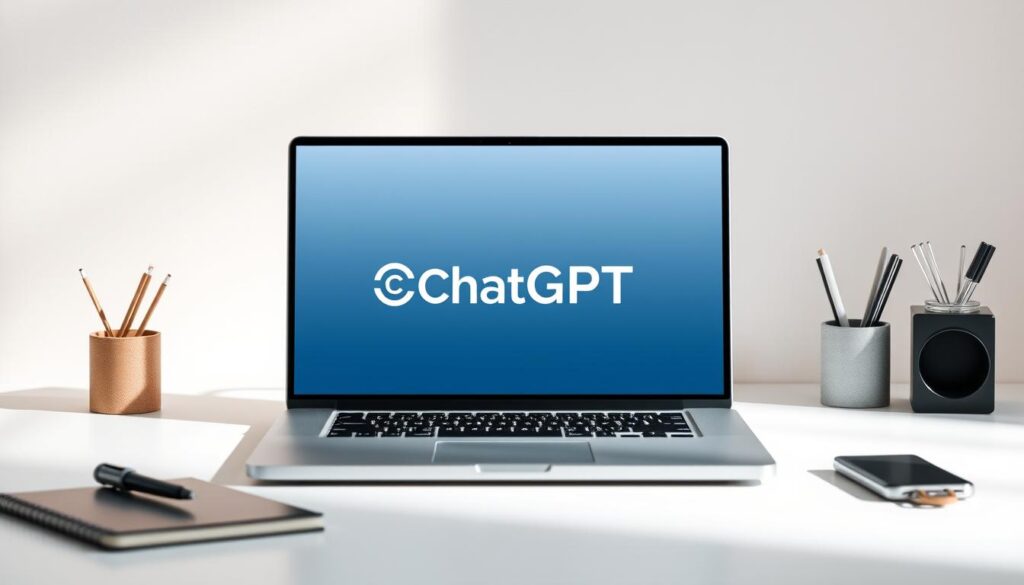
Getting Started in Minutes
Visit chat.openai.com directly from any browser—no app installation needed. Mobile users can download the official iOS/Android apps for on-the-go access. New features include:
- Voice interactions: Speak requests hands-free
- Image analysis: Upload screenshots or photos for descriptions
- File uploads (limited to 10MB for free accounts)
Manage sessions efficiently by pinning frequent chats. Free accounts maintain conversation history for 30 days. Custom instructions help tailor responses to your preferences.
Maximizing Free Tier Benefits
While the free version has rate limits, strategic usage avoids interruptions. Space requests 2-3 minutes apart during peak hours. Community forums offer workarounds for common bottlenecks.
“Free users generate 85% of our training data—their contributions shape smarter AI.”
| Feature | Free Tier | Plus ($20/month) |
|---|---|---|
| Model | GPT-4o mini | GPT-4o full |
| Messages/hour | 15 | 80 |
| File uploads | Text only | PDF/Excel analysis |
To use chatgpt for advanced tasks, explore the upgrade incentives. Paid plans unlock priority access during high traffic and early beta features. Yet for casual chat and learning, the free tier satisfies most needs.
Future of ChatGPT and AI Chatbots
The evolution of conversational AI continues to accelerate, reshaping how we interact with technology. Industry leaders predict transformative changes in both capabilities and applications. These advancements will redefine workflows across sectors while raising important societal questions.

Upcoming Updates and Trends
OpenAI’s anticipated GPT-5 release in 2026 promises groundbreaking improvements. Expect these key developments:
- Multimodal interactions: Seamless voice, text, and image processing in real-time
- Specialized vertical solutions for healthcare, finance, and legal sectors
- Continuous learning architectures that adapt without full retraining
Current research focuses on reducing computational costs while improving accuracy. Google and Microsoft invest heavily in making AI tools more accessible. The race to develop ethical certification programs intensifies as adoption grows.
Impact on Jobs and Industries
McKinsey’s latest report suggests 47% of work tasks could become automated. This transformation creates both challenges and opportunities:
| Industry | Automation Potential | Emerging Roles |
|---|---|---|
| Customer Service | 65% | AI Trainers |
| Content Creation | 40% | Prompt Engineers |
| Software Development | 30% | AI Integration Specialists |
Creative fields face disruption as AI generates music, art, and literature. New products and services will emerge to support human-AI collaboration. Universal basic income debates gain traction as workforce dynamics shift.
“The most successful companies will blend human creativity with AI efficiency—not replace one with the other.”
Regulatory frameworks evolve alongside these changes. Governments worldwide explore ways to balance innovation with worker protections. The future points toward symbiotic relationships between people and intelligent systems.
Conclusion
AI-powered tools like generative pre-trained models transform how we work and create. From drafting content to debugging code, they boost efficiency across industries. Responsible use ensures ethical progress while maximizing benefits.
Upcoming features promise even smarter workflows. Stay ahead by exploring advanced prompts and community resources. Experiment with free tiers before upgrading for priority access.
As technology evolves, blending human creativity with AI assistance unlocks new possibilities. Start small, learn continuously, and adapt to stay competitive in this fast-changing landscape.

